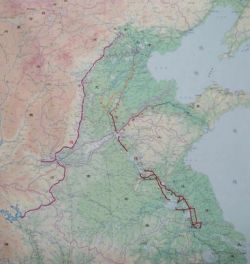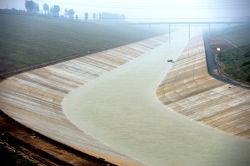South-to-North Water Diversion Project
The South-to-North Water Diversion Project (南水北调) is designed to divert water from the water-rich south of the country, mainly the Yangtze, the country's longest river, to arid northern parts.
The world's largest water transfer project consists of eastern, central and western routes.
Sections of the project in Shandong and Jiangsu provinces along the eastern route had been completed and started to supply water in December 2013.
The first phase of the central route is scheduled to be launched in late October 2014, which will see a massive 9.5 billion cubic meters of water per year pumped through 1,277 kilometers of canals and pipes from the Danjiangkou reservoir in central Hubei Province through Henan Province to reach Hebei, Tianjin and Beijing in the north.
Unlike the eastern route that saw an upgrading of the Beijing-Hangzhou Grand Canal for a water diversion channel, the central route involves raising the height of the Danjiangkou Reservoir from 162 meters to 176.6 meters and building canals and pipes to divert water from the reservoir to North China.
The western route, meant to replenish the Yellow River with water from the upper reaches of the Yangtze through tunnels in the high mountains of western China, is still at the planning stage.
The water transfer project was conceived by former Chairman Mao Zedong in 1952. The State Council approved the ambitious project in December 2002 after debate lasting nearly half a century.

